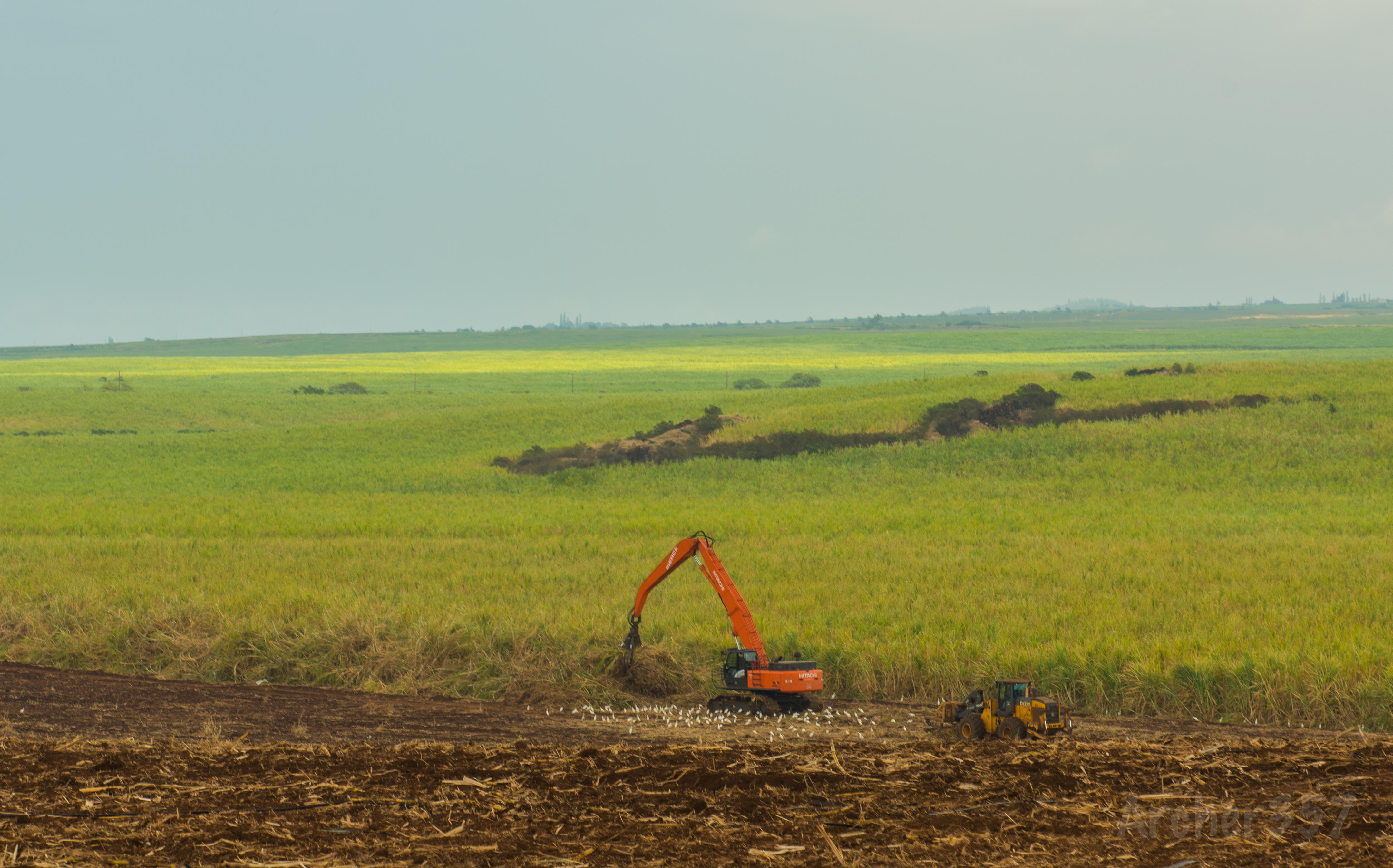Maui Sugar: End of an Era – Diversified Agriculture Trials Underway
As we head into the final quarter of 2016, Maui Now created a special Maui Sugar: End of an Era section that honors the industry, its workers and the plantation roots that have become a part of the last 145 years of Maui’s history.
As the last harvest at Hawaiian Commercial & Sugar Company nears its end, we had the opportunity to document some of the work that goes into the operation, and discuss the company’s new venture into diversified agriculture.
In January, 2016, Alexander & Baldwin Inc. announced that it is transitioning out of farming sugar and will instead pursue a diversified agricultural model for its 36,000-acre Hawaiian Commercial & Sugar Company plantation on Maui.

HC&S field work, final sugar harvest. Photo credit: Chris Archer.
HC&S General Manager, Rick Volner tells Maui Now that each of the crops and projects that are being tested for diversified agriculture have different timelines.
“Some of these are really early on in the research and development. A lot of the crops that we’re looking at for bio-energy production, as an example, really haven’t been grown in Hawaiʻi in large acreages. They may have been grown in the past in very small quantities. We’re talking about growing these on much, much larger acres. So that research and development may take time–it may take a few years,” said Volner.
Mae Nakahata director of agricultural research and crop control at Hawaiian Commercial & Sugar Company discussed the company’s sorghum trial site, located on 140 acres off of the Mokulele Highway in Central Maui.
She explained that while sweet sorghum is the source of commercially sold molasses, forage sorghum like the one planted on Maui can be grown to feed livestock and as a source for biofuel.

HC&S Puʻunēnē Mill. Photo by Wendy Osher.
“Because the facility that will eventually use the sorghum is not available, we’re actually having the livestock guys come and they’re using it. Because the same things that are easy to digest for the cattle, work for the biofuel. You want easy digestibility. The cows are actually kind of a test too. If they really like it, they put on lots of weight (and) you know it’s a good thing, so it will be really productive for our biofuel production,” Nakahata said.
“We had an earlier testing of corn and different varieties of sorghum and we felt this was the one that had the greatest potential, so we advanced here to a 140 acre trial. The neat thing about sorghum is that it ratoons–in other words, after planting and harvest, it will regrow by itself. This is the second cut and in our earlier tests we already had cut it four times and it’s holding the yield–in fact it’s actually increasing yield, so that is really good news,” Nakahata said.
“The advantages of going from a two-year crop with sugar cane, we’re coming to one that you have to harvest every three months, so if you had to plow and plant that, it would be very difficult. With this, we just harvest, turn on the irrigation and it will regrow,” she said.
“The other thing about it is that it seems to have a lot less pests and is less dependent on day length. So while this is sensitive, it’s not as bad–the yield does drop, but not as much as these other crops,” said Nakahata.
According to Nakahata, the company also experimented with cover crops, not just to improve the soil health, but also to manage pests. “We actually had quite a bit of ladybird beetles, and the ladybirds actually help to control the aphids,” she said.
“We also had daikon radish, and we’re actually looking at it to replace tractors, to till the soil, because the daikon grows deep and it has a very deep taproot. So it breaks up compaction (and) it adds organic matter,” Nakahata explained.
“I think this, along with other crop rotations we are looking at would work under our conditions, but there is a lot of work to be done. We need people to understand and be patient. We’re trying,” she said.
Volner said that as part of the diversified agriculture plans, HC&S is also looking at an additional agricultural park or expansion of the current ag park, which he said could be on a much shorter timeline. He said, that once the land and infrastructure are ready, “potentially we could have farmers on the land within a year or less.”










